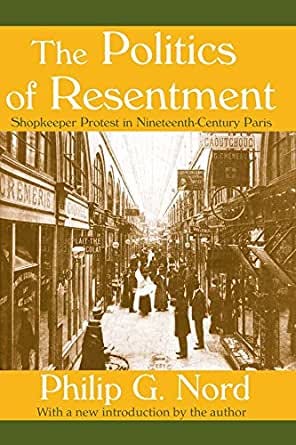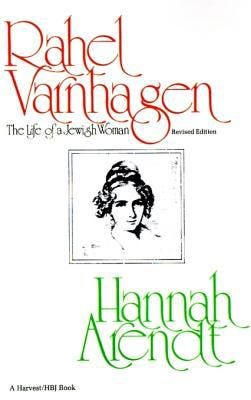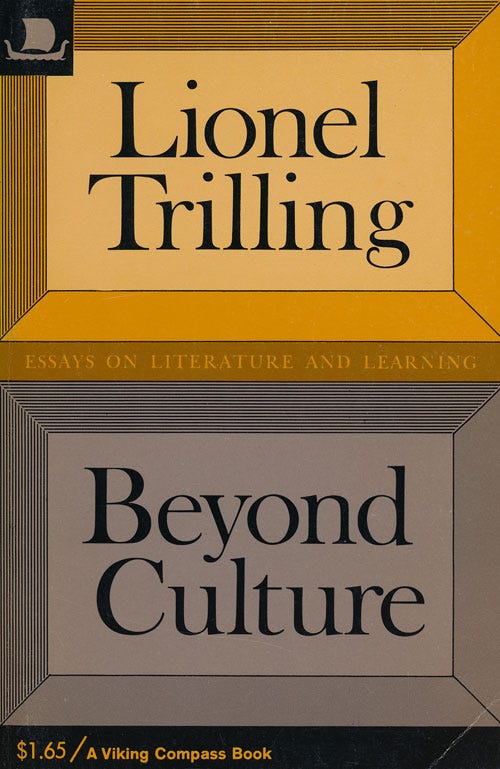My Top Books of 2021
None of Them Were Released This Year
I hesitated to do this post at first, because I felt so many of these books are kind of niche or specific or simply just old, but hopefully I’ll be able to explain what I found interesting about them and why I felt they helped me to better understand—or at least better tolerate —the world of 2021. The overall theme seems to be “society and its many resentments.”
Philip Nord’s The Politics of Resentment: Shopkeeper Protest in Nineteenth-Century Paris (Princeton 2005) must be one of the most fascinating histories I’ve ever read. I found it during the series I was writing on the Dreyfus Affair and it gave a lot of insight into the fractured and changing social world of Paris and how it gave rise to a reactionary populism that can feel a little familiar these days. The late 19th century saw the disruption and dislocation of the old artisanal patterns of commercial life in Paris by industrial production, department stores, national and international markets, and the redesign of the city by Baron Haussmann. New political ideologies sprang up to answer these social crises. “Who might be a citizen was a subject of debate, but the republican version of nationalism tended towards inclusivism, to an embrace of all comers willing to accept the Revolution of 1789 and its universalist creed,” Nord writes. “A new variant of nationalism, however, took shape in the fin de siecle. It spoke in populist accents, waxing lyrical about the charms of village life, the cozy quartier, the virtues of hard work and family intimacy…It claimed the shopkeeper as a natural ally—indeed recasting the petit commercant’s struggle against the department store as a recapitulation in microcosm of the nation’s own against money power.” Needless to say perhaps, this new nationalism was also quite xenophobic and antisemitic. The most interesting part of the book for me—and I think perhaps something one casts the light on our present media environment—was Nord’s analysis of the literary scene that furnished the nationalist and anti-Dreyfusard journalists and intellectuals—a strange mix of marginal demimondaines, bohemians and dandies and highly successful establishment authors and journalists:
The eclipse of the boulevard culture brought disappointment to journalists and littérateurs whatever their position in the old hierarchy of success. The marginals could never hope to rise in a world of shrinking opportunities. As for the successful, the emergence of new cultural hierarchies devalued their achievement. They were equally victims of a profound cultural change. The old world, of course, did not vanish noiselessly but made a supreme effort in anti-Dreyfusard Nationalism to postpone defeat.
I write more about this all here.
In a similar vein, Fritz Stern’s The Politics of Cultural Despair, first published in 1961, looks at the careers of three German critics of liberalism and modernity in the late 19th century and early 20th century. They were part of the “conservative revolution” movement and they contributed to the cultural atmosphere that birthed Nazism. Here is a quote—I don’t think it’s too hard to see why the book feels relevant for understanding America’s contemporary right-wing intellectuals:
They railed against the spiritual emptiness of life in an urban, commercial civilization, and lamented the decline of intellect and virtue in a mass society. They attacked the press as corrupt, the political parties as the agents of national dissension, and the new rulers as ineffectual mediocrities. The bleaker their picture of the present, the more attractive seemed the past, and they indulged in nostalgic recollections of the uncorrupted life of earlier rural communities, when men were peasants and kings true rulers. Most of them thought that this world had been destroyed by evil hands; consequently they firmly believed in a conspiratorial view of history and society.
I think it’s underemphasized how unremittingly gloomy—despairing—the reactionary mind is and how this mood, rather than being repelling, forms a good deal of its aesthetic appeal.
Readers of this newsletter and my twitter will know I’m a big admirer of Hannah Arendt, but I hadn’t read her Rahel Varnhagen: The Life of a Jewish Woman, which was to be her doctoral dissertation before she had to flee Germany in the 1930s. A kind of critico-existential biography, it follows the life of Rahel Varnhagen née Levin, the daughter of a recently emancipated Jewish merchant who hosted a salon in her garret that featured all the great names of early German Romanticism. Arendt writes she was, “Not rich, not cultivated and not beautiful-that meant that she was entirely without weapons with which to begin the great struggle for recognition in society, for social existence, for a morsel of happiness, for security and an established position in the bourgeois world.” Instead, Rahel made her way through being intelligent, passionate, witty, and original. “The handicaps imposed upon her by nature and society would be neutralized by the mania ‘for examining everything and asking questions with inhuman persistence.’ Objective and impersonal thought was able to minimize the purely human, purely accidental quality of unhappiness.” There is a tragic air to this story as Rahel struggles to find a place in the world, and often meets open cruelty and prejudice, even at the hands of former lovers—the types of betrayals that Arendt knew a thing or two about as well. But it also describes a very alluring world where people fall in love with people they glimpse in theater boxes and sent each other long adoring letters. Of one of Rahel’s admirers, a Prince wrote, “Brinckmann is really so sweet. Lovers write letters for the sake of love, but he loves for the sake of letters.” The book is also packed with Arendt’s own brilliant observations of the literature and society of an era that was giving birth to the modern self, as introspective and utterly self-absorbed as it can be:
Indiscretion and shamelessness were phenomena of the age of Romanticism…With the loss of the priest and his judgment, the solitude of the would-be confessor had become boundless. The singularity of the person, the uniqueness of the individual character, stood out against a background of indefinite anonymity. Everything was equally important and nothing forbidden. In complete isolation, shame was extinguished. The importance of emotions existed independently of possible consequences, independently of actions or motives…
Introspection accomplishes two feats : it annihilates the actual existing situation by dissolving it in mood, and at the same time it lends everything subjective an aura of objectivity, publicity, extreme interest. In mood the boundaries between what is intimate and what is public become blurred; intimacies are made public, and public matters can be experienced and expressed only in the realm of the intimate-ultimately, in gossip.
I’m trying to gradually read bits and pieces of Balzac’s massive Comedie humaine, his 48-volume novel that depicts ever aspect of French society—from its dingy boardinghouses to its most dazzling ballrooms—between the Restoration and the July Monarchy. Cousin Bette is a story about an envious poor relation taking vengeance on her aristocratic family. But the real pleasure of reading these books for me are Balzac’s wonderfully cynical observations about manners and morals:
Balzac was greatly admired by Marx and Engels and you can see why. His novels contain the nuclei of the entire life projects of later social theorists, spelled out in a paragraph or so. Here he anticipates the work of Rene Girard and Pierre Bourdieu:
I found this passage where Balzac, the reactionary monarchist, bemoans the decline of the sumptuous lives of the old aristocracy, finding a kind of heroism in their hedonism, to be very funny:
“It is possible to say of Jane Austen, as perhaps we can say of no other writer, that the opinions which are held of her work are almost as interesting, and almost as important to think about, as the work itself,” writes Lionel Trilling at the beginning of his essay “Emma and the Legend of Jane Austen.” That is definitely true in Trilling’s case and that’s why I recommend two of his essays on Austen, that one in the collection Beyond Culture and “Mansfield Park” in The Opposing Self. I think Austin is a sort of alter ego for Trilling: he really identified with her more than any other writer. He doesn’t quite go so far as to attribute his views to her, but she seems to be an authority for him that gave him comfort and confidence about his own sensibility. Observe, from the “Emma” essay: “Jane Austen, conservative and even conventional as she was, perceived the nature of the deep psychological change which accompanied the establishment of democratic society—she was aware of the increase of the psychological burden of the individual, she understood the new necessity of conscious self-definition and self-criticism, the need to make public judgments of reality.” Or in the “Mansfield Park” essay, where he writes that Austen is the first novelist “to be aware of the Terror which rules our situation, the ubiquitous anonymous judgment to which we respond, the necessity to feel to demonstrate the purity of our secular spirituality, whose dark and dubious places are more numerous and obscure than those of religious spirituality, to put our lives and styles to the question, making sure that not only in our deeds but in décor they exhibit the signs to the number of the secular-spiritual elect.” Neither are these outward signs of secular spirituality entirely about moral contents: they extend to an aesthetic judgment of the personality, a kind of snobbery about each aspect of people’s personal self-expression; it “requires us to judge not merely the moral act itself but also, and even more searchingly, the quality the agent.” The qualities of the agents are very different, almost diametrically opposed, in these two novels: In Emma, Austen presents with the charming but snobbish, stylish, selfish, and maybe even slightly wicked Emma Woodhouse—who, Austen nevertheless said she liked—; in Mansfield Park, with the sickly, but virtuous Fanny Price embodying a rather dour reproach of everything pretty young Emma stands for: “[Mansfield Park’s] impulse is not to forgive but to condemn. Its praise is not for social freedom but for social stasis. It takes full notice of spiritedness, vivacity, celerity, and lightness, but only to reject them as being deterrents to the good life.” Much to think about as we look for love and friendship in a strange new world.
Anyway, on that note, I hope you all enjoyed reading these excerpts as much I did. I don’t know that any of these make very good gifts, but I wish you a very happy holiday season nonetheless.









Fritz Stern’s book is a feast of analysis and historical insight. Great to see somebody’s still reading it. For something similarly rich and rewarding on the aestheticization of cultural despair intertwined with fascist nihilism and power worship, Modris Ekstein’s “The Rites of Spring” (1989) pays great dividends (although it deals with the interwar period). Also, a both deep and wide survey of the cultural pushback against the late-19th century triumphalist black hole represented by the protagonists of Stern’s book, there’s Allan Janik and Stephen Toulmin’s “Wittgenstein’s Vienna” (1973). A blend of technical philosophy and cultural history of the highest order. Oldies but goodies. (Apologies for the didacticism but who doesn’t like recommending good books).
Always trying to play catch-up; this list helps. Thank you.